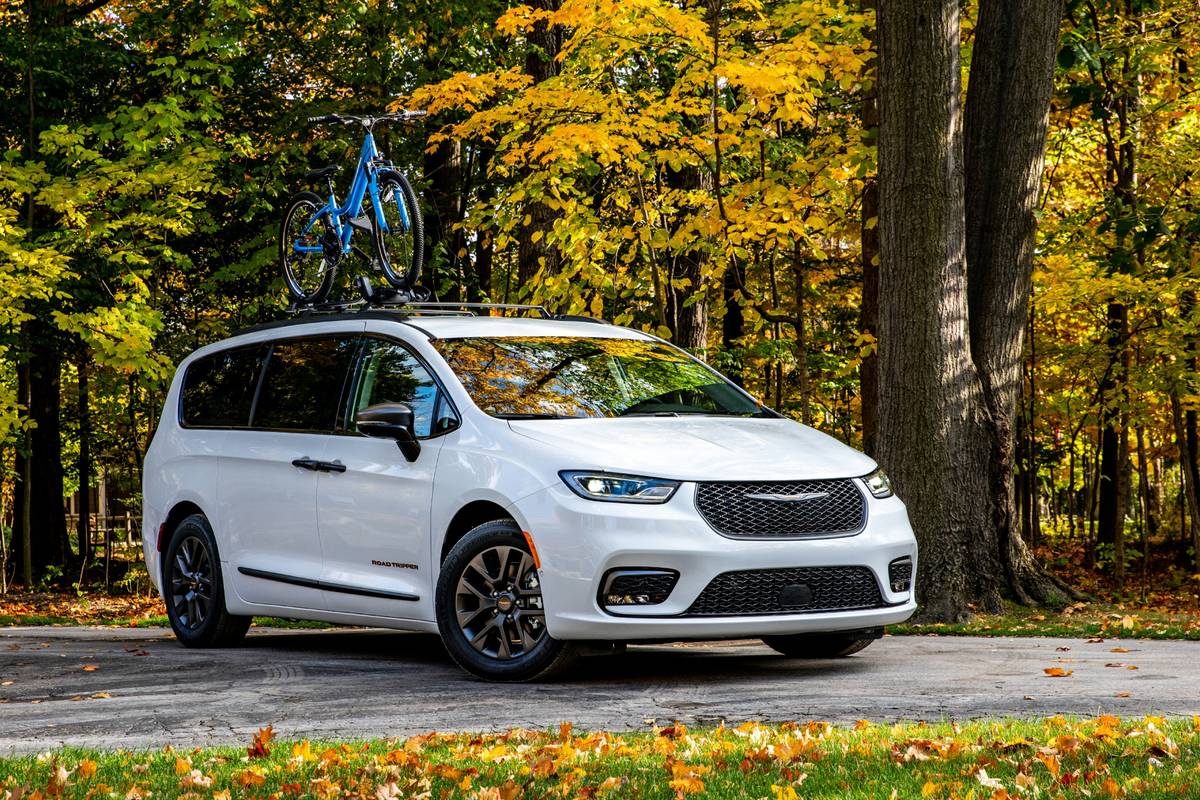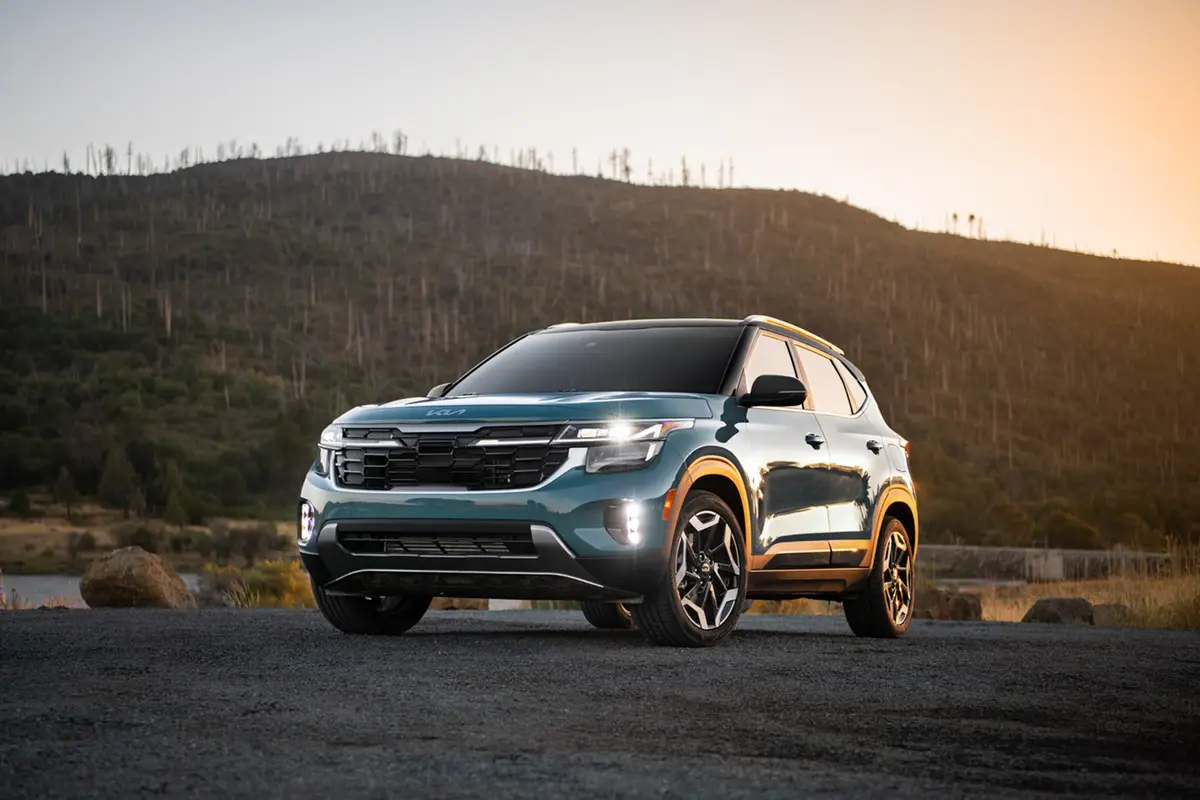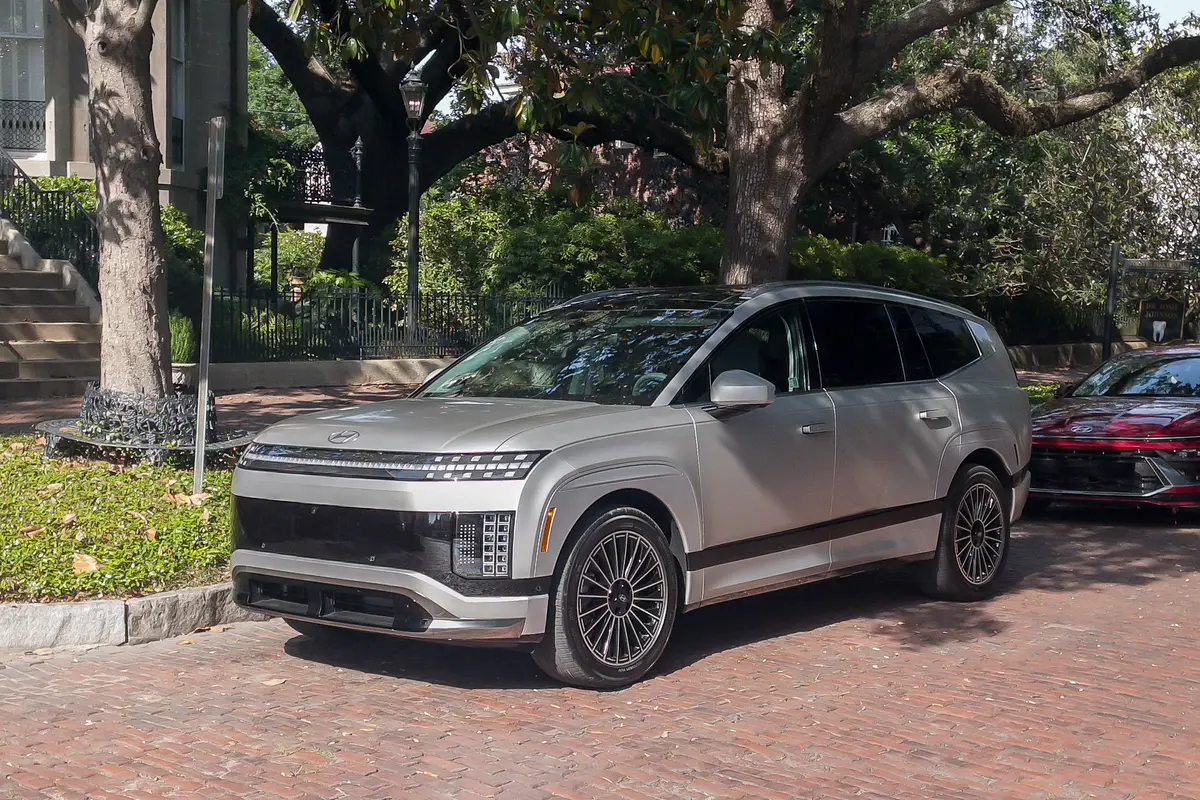PickupTrucks.com's view
Suzuki has long manufactured high-performance motorcycles and has been a player in marine engines, ATVs, dirt bikes and other recreational equipment. It has sold more than 100,000 vehicles per year for the past two years, and has considerable equity worldwide in offroad SUVs with the Samurai and its variants. But it hadn’t yet entered the pickup truck market.
“There are over 2 million Suzuki owners in North America who, by virtue of their involvement in outdoor recreational activities, require a pickup truck,” American Suzuki spokesman Dave Boldt said.
That being the case, it makes sense that the automaker would want to offer its more adventurous customers a Suzuki pickup.
Rather than develop a new pickup from scratch, Suzuki teamed with Nissan to develop a truck that would suit its customers’ needs. They came up with the Equator, which will be built in Nissan’s Smyrna, Tenn., plant starting Oct. 1. The Equator will be available for sale at 400 Suzuki dealerships around the first of December.
The truck has all the underpinnings of Nissan’s Frontier, but with select option packages and several key differences that make it better-suited for a different user. The differences start with a front clip that is distinctly Suzuki, with a trapezoidal grille and a high-tech light cluster. Like Nissan, Suzuki will offer four- and six-cylinder engines, long beds and standard beds, two- and four-wheel-drive, and extended and crew cabs.
The top-of-the-line Equator will be the long-bed crew cab RMZ-4 equipped with a full range of accessories and options best suited to bike, ATV and/or motorboat owners. It’s squarely aimed at outdoor recreationalists.
For example, leather seats will not be available through Suzuki – “that’s not our type of customer,” Boldt said. Instead, low-maintenance rubberized materials are used throughout the cabin. Side airbags with a rollover sensor will be standard on the Equator, benefiting Suzuki’s more-likely-to-go-off-road customer. Suzuki also offers a unique touch-screen GPS navigation system, called Suzuki TRIP, that can be removed from the vehicle and taken on a boat or to a campsite. All Equators come with Suzuki’s longer 100,000-mile, seven-year transferable warranty.
We recently had the opportunity to drive Suzuki’s new pickup in and around San Antonio, both on-road and off.
First stop was Canyon Lake Marina, about 35 miles north of San Antonio, where two Equators with bass boats attached were provided for boat-ramp testing. The water was low at Canyon Lake, and the concrete boat ramps were long and steep. The bass boats, a Ranger and Triton, weighed about 3,800 and 4,200 pounds, respectively. The Equator had no trouble pulling them out – traction was not an issue in four-wheel-drive mode – and weight was certainly not an issue.
Suzuki says the Equator can tow loads up to 6,500 pounds when properly equipped. The maximum tow rating will vary by model, but we learned that something closer to 5,000 pounds would be the cutoff for a standard Class 3 receiver hitch. If you were to tow something closer to the 6,500-pound limit, you’d need a weight-distributing hitch. The Equator isn’t intended to be a heavy-hauler, after all; it’s meant to be the kind of truck you’d use to pull a trailer with a lighter boat, a couple of ATVs or a pair of Jet Skis. For that use, and with the V-6, it has the power, wheelbase and heft to do the job safely and efficiently.
Bed Design
The RMZ-4 Equator’s bed design helps make it ideal for outdoor enthusiasts. It’s a high-utility design, starting with a spray-on, textured bedliner that’s applied at the factory and an engineered tie-down system that lets you secure a bike or ATV while on the freeway or on the way to a remote offroad location. The bed rails are capped to resist scuffing, and on the inside there’s a system of rails with sliding tie-down fixtures that adjust to the length of the bed. On the bed itself are rails that offer further stability for wheeled vehicles. There’s also an available flip-over bed extender that’s thoughtfully canted to contain wheeled vehicles that might extend just a bit farther than the tailgate.
Off-Road
We drove an RMZ-4 Equator around several trails at Knibbe Ranch, about 55 miles north of San Antonio. The ranch, consisting of 2,000 acres of Texas hill country, is mostly covered with scrub oak and juniper, punctuated with wide, shallow, rocky-bottomed rivers cutting through layers of limestone.
An eroded hunting trail was marked for us to follow, and mud holes and other obstacles had been created specifically to demonstrate the approach, departure and traction capabilities of the Equator. The trail required use of 4Lo to ease down steep, loose-rock sections and to crawl across the river. It’s the kind of real-world four-wheeling that a 4×4 owner would encounter to reach a deer stand, fishing spot or any other remote outdoor destination. We never got stuck, but one of our fellow journalists did and had to be pulled out of the river with the Caterpillar. There is a vehicle-rescue attachment point on the Equator, located rather low under the front bumper, which may or may not be handy if you get stuck. In a case like that, the optional receiver hitch would be a welcome asset.
At one point we needed to engage the locking rear differential to crawl up a short limestone rock stair step, tires wet with river water. It clicked in and we moved ahead easily with light throttle. We found that the crawl ratio, 33.86 to 1 with the automatic transmission, is low enough to allow for sure grip in steep, low-traction situations. With the four-cylinder engine and five-speed manual transmission, a lower (42.33 to 1) ratio is available to maximize leverage. It seemed clear to us that, given the rear locker and the electronic traction control, traction is plenty good enough for a sensible driver to crawl around, uphill and down, wherever the Equator will fit.
Angles of approach and departure, generally a weakness in pickup trucks, did not seem to be a severe handicap. At one spot, a hill-and-trench obstacle showed us that it was possible to nose in very steeply and still pull up a steep uphill ramp without dragging the hitch. With the RMZ package, the approach angle is 32.6 inches and departure is 23.3 inches. Running ground clearance is 8.6 inches, and 10 inches at the rear axle. These are reasonably good numbers: by comparison, a Dodge Ram 4×4 Crew Cab with standard tires would have 19.2 degrees of approach angle, 24.3 degrees of departure and 7.9 inches of ground clearance at the rear.
The mud traps we encountered were filled with heavy, black mud – the gummy kind that sticks to wheel wells, flings backward in big clumps and adheres to the bottom of your shoes like glue. The sections we drove were short, maybe only 40 to 50 yards, but they were deep enough to get sideways if you gave it too much throttle. This functioned as more of a tire test than anything else.
Our test unit had P265/75R16 BFG Rugged Trail T/A tires, a mud-and-snow tire that was designed to be tough, but was reasonably quiet on most types of pavement. We ran them at recommended pressures. This rubber provided sure traction on most of the offroad course, though it did require some throttle to self-clean as we made our way through the muddy goo. We’d say these tires are fine for almost everything a 4×4 will ever do — unless you see a lot of deep mud, in which case you’ll need something more specialized.
The 4×4 system is actuated by turning a dial with three settings: 2WD, 4H and 4Lo. You have to stop to switch into 4Lo, putting the transmission in the neutral position with the brake depressed. We had no problem switching into 4Lo – the transfer case clicked in and the indicator light illuminated – but once we were back on pavement we found it tricky to get back into 2WD. Even with the transmission in neutral, it took several tries to exit 4Lo.
We also noticed a slight rattle coming from the right front quarter, something like a loose bracket. We’ll chalk that up to overzealous offroad testing by the previous group of maniacs, but it’s something we noticed.
The Equator has an electronic hill descent assist and a hill start assist package. These electronic upgrades work to control slippage by applying brakes in small increments, from wheel to wheel very quickly, and can be a comfort in situations where long hills are very steep. With the driving we did, we never really needed either one, but if we did a lot of offroad driving in, say, Colorado, we might appreciate having them.
As with any proper 4×4, a full-size spare tire is included.
On-Road
In everyday driving, the Equator rides and handles the way a midsize pickup should. It’s smoother than a full-size and easier to park, but without V-8 power. All the test units were 4x4s; we hopped into an RMZ-4 Crew Cab with the 4.0-liter V-6 and five-speed automatic transmission for our drive on mostly two-lane country roads.
The interior is sparse and simple. It bucks the current trend of applying wood-grain, leather-lined, European-style luxury car interiors to pickup trucks. Instead, there’s a three-spoke wheel and a simple four-instrument front cluster that’s brightly lit with white numerals and red needles. Textured plastic materials are used throughout, with bright-metal coated plastic accents on the center stack, shifter panel and steering wheel. You can tell the bright pieces are plastic if you tap them, but to our eyes the interior doesn’t seem cheap, just easy to clean. The seats, for example, are made using layers of a rubberized fabric and the floor coverings appear mud- and water-resistant.
During our drive, we took note of the usual center cupholders with removable rubber liners, plus numerous storage pockets and slots, including two storage compartments in the glove box location. The hand-brake lever, just to the left of the cupholders, is something we like, as it can be an asset in offroad situations. The center storage box, while small, is well-organized and at just the right height for our elbow to rest on it.
On the move, the V-6 engine provides good, if not great, acceleration and passing power. The power plant is a Nissan four-valve DOHC with aluminum block and heads. It makes 261 horsepower at 5,600 rpm, and its peak torque, 281 pounds-feet, arrives at 4,000 rpm, so we found it requires some continuous throttle to wind up to its maximum performance level. Redline is 6,000 rpm.
With the five-speed automatic in fifth gear overdrive, 60 mph comes at just 1,800 rpm. At that cruising speed, the driving is relaxed, quiet and no doubt quite efficient. Punch the throttle and the transmission kicks down and the engine gets louder, but it still takes a moment for rpm to build enough to deliver real passing power in a truck that weighs about 4,460 pounds when empty. That might not be exciting, but it is consistent with the idea of a smaller pickup that’s built to get the job done without overkill or V-8 fuel consumption. The EPA numbers for the Equator suggest that the V-6 would deliver about 15 mpg around town and 20 mpg on the highway with the automatic transmission. The 152-hp four-cylinder version with the five-speed manual transmission is rated at 19/23 mpg city/highway.
On the mostly two-lane county roads we took, ride and handling characteristics were good for an empty pickup truck. Steering is based on an engine-speed-sensitive rack-and-pinion setup that lent itself to carving corners, and the suspension allowed the Equator to take a reasonably firm set through the corners and exit cleanly when pushed. Brakes consist of discs on all four corners, with twin pistons on the front set. They’re easy to modulate at the top of the pedal, with a consistent gain in stopping power as you apply them. They aren’t heavily assisted, so there is minimal pedal squish at the top, and though they might take more effort than some brakes at maximum stopping, they don’t grab as you approach stoplights. Antilock brakes and electronic brake-force distribution are standard. Our test unit was equipped with Bilstein shocks, which have a reputation for firm damping, but we didn’t find the highway ride quality of the unladen Equator objectionable. The front suspension is a torsion-bar independent setup, and the rear uses a leaf-spring pack.
Bottom Line
We think the Equator will be well-received by Suzuki’s customer base, which will appreciate Suzuki’s unique understanding of their wants and needs. It’s a truck that’s optioned out expressly for their demographic, and it brings with it Suzuki’s own warranty, a clear selling point. The Smyrna production plant is one of the lowest-cost plants in the automotive world, so pricing is likely be competitive. Suzuki is still working out pricing details and hasn’t released exact prices yet. They did advise that, in most cases, pricing would be “within a few dollars” of Nissan Frontier prices. When we get the official numbers, you’ll read about it here.
Latest news



